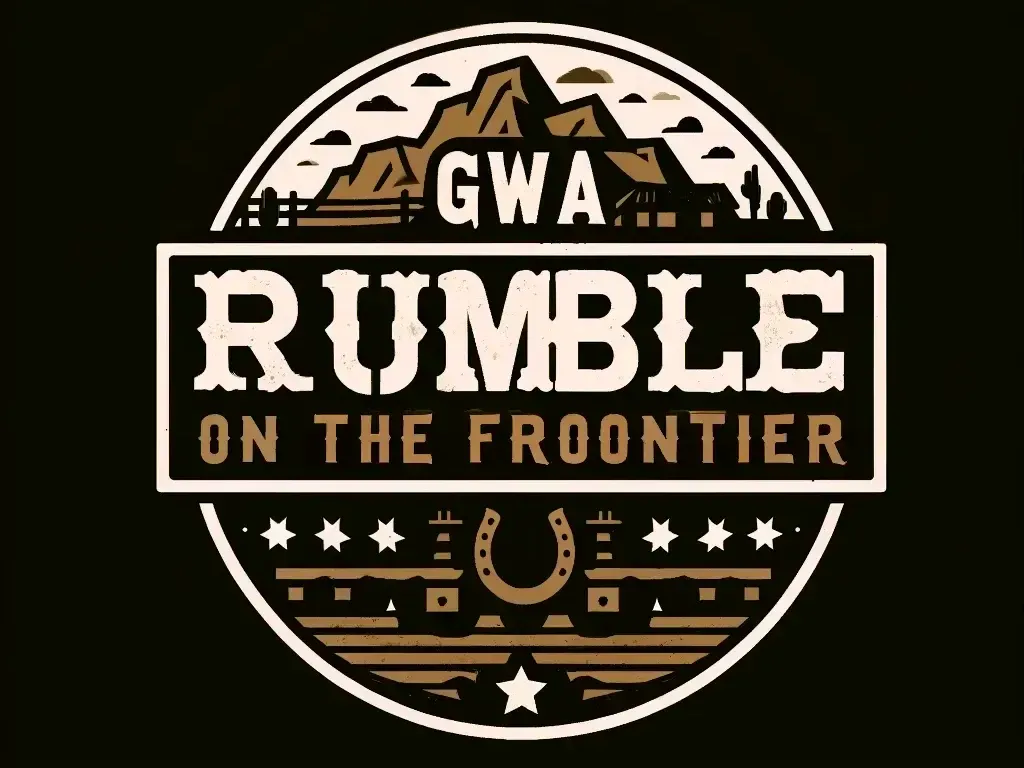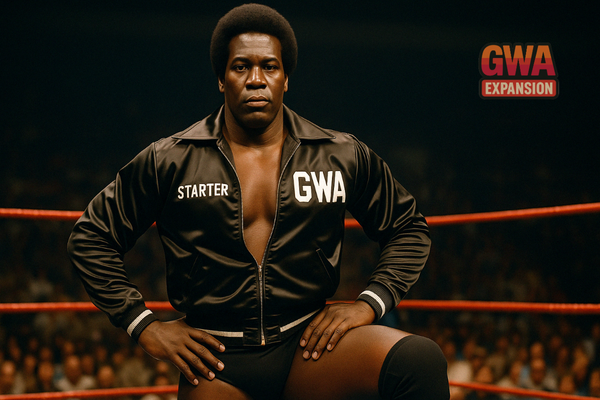GWA Rumble on the Frontier

The GWA Rumble on the Frontier is an annual, adrenaline-fueled tournament event that became a cornerstone of the Great Western Wrestling Alliance's calendar starting in 1969. This innovative event features a series of high-stakes battle royals spread over successive weeks, where wrestlers are not only tasked with being the last man standing but also scored on their entry and elimination positions, adding a layer of strategy and endurance to the traditional battle royal format. Wrestlers accrue points for outlasting others and for their resiliency and cunning in the ring, with scores tallied throughout the tournament to determine the overall victor. The Rumble on the Frontier quickly became synonymous with unpredictability and excitement, as each wrestler's entrance became a spectacle and their fight for survival a test of their mettle, ultimately crowning a wrestler whose prowess and tenacity best embodies the spirit of the GWA.
The Rumble on the Frontier was strategically scheduled in early fall, specifically around September. This timing was chosen by GWA co-founders Redwoods Carson and Rio Grande Ramirez to capitalize on sports calendar gaps, with many sports in off-season, and to match peak television viewership as families settle back into fall routines. The early fall scheduling also avoided extreme weather, ensuring smooth logistics and high attendance. In the inaugural Rumble on the Frontier tournament in August 1969, "The Gentleman" James Montgomery distinguished himself as a master of both strategy and endurance, claiming victory in a dramatic and hard-fought series of battle royals. Montgomery's approach was a sophisticated blend of patience and psychological warfare; he entered each round with calculated timing, often emerging when his opponents least expected and were most fatigued. His impeccable ability to manipulate both his entry and his eliminations of competitors ensured that he consistently scored high throughout the tournament. Montgomery’s prowess was not only in lasting longer than his opponents but in his shrewd placement and timing of eliminations, maximizing his points and disorienting other wrestlers with his unexpected tactics. The climax of the tournament saw Montgomery outwit the final few contestants with a cunning diversion followed by swift, decisive moves, securing his victory and etching his name as the first champion of the Rumble on the Frontier, a win that showcased his mental acuity and physical resilience, perfectly encapsulating the essence of what would become a storied event in the annals of GWA history.
Rumble on the Frontier Scoring
The scoring system was designed to reward both strategic placements and survival skills across the four weeks of battle royals. Each wrestler entered the ring at a predetermined spot, with 30 participants per event. Points were allocated based on two key factors: the order of entry and the order of elimination, incentivizing both early endurance and strategic late entries.
For example, wrestlers received points based on their entry position—entering earlier in the match could earn them more points, as it signified a longer duration in the ring if they survived. A wrestler entering first could earn up to 30 points just for their entry, with the potential to accumulate more points the longer they stayed in the ring. Conversely, the last wrestler to enter, theoretically having the freshest advantage, might start with fewer entry points.
The elimination aspect worked similarly but in reverse; the last wrestler remaining in the ring not only won the match but also garnered additional points. For instance, the last wrestler eliminated received 30 points, second-last got 29, and so forth, down to the first eliminated, who received only 1 point for elimination.
Using "The Gentleman" James Montgomery as an example, suppose he entered fourth and was the last wrestler standing in one of the weekly events. He would receive 27 points for his entry position (since 30th position earns the highest at 30 points, down to 1 for the first entry) and an additional 30 points for being the last man in the ring, totaling 57 points for that week.
Over the four weeks, each wrestler's weekly scores were added to determine their overall ranking in the tournament. The wrestler with the highest cumulative score at the end of the tournament was declared the winner. This scoring system not only highlighted the physical resilience required to outlast opponents but also underscored the importance of tactical gameplay, as wrestlers had to balance the risk and reward of their entry times against their ability to endure and outmaneuver their opponents.





